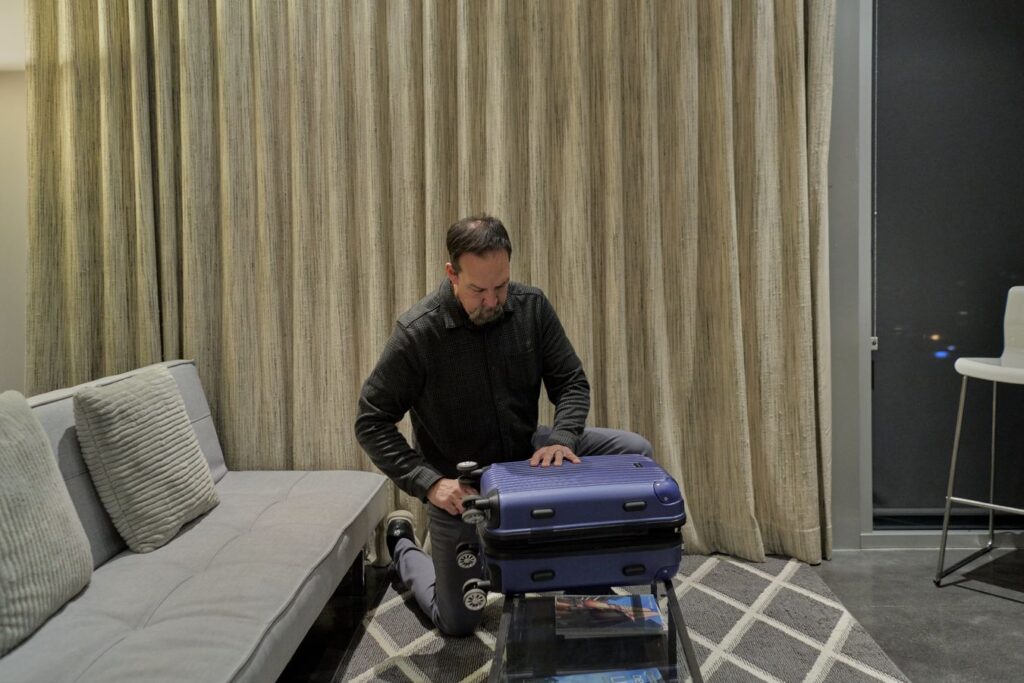The Math Behind the New Super Commute
 download
download
Hybrid work is changing the calculus of what it takes to live and work in separate places
A new breed of commuter is going to great lengths—and doing a lot of number crunching—to pull off living and working in far-apart places.
A super commuter used to mean someone who trekked at least 90 minutes to work each way, often five days a week. But with more companies embracing hybrid work, the new super commuter is one of the many people who now live hundreds of miles or multiple states away from where they work. They commute fewer days but even longer distances.
Making it work often means predawn flights to another time zone, paying for a second apartment or hotel stays, or hopping on a plane or train impromptu to make a last-minute meeting with the boss. Even with the extra housing and travel expenses, some long haulers say the payoff can translate to thousands of dollars in savings or better work-life balance.
“By the time I get to bed it’s going to be close to a 24-hour day,” says Frank Croasdale of some of the crazier days he commutes to his physical-therapy practice in Redondo Beach, Calif., from his home in Austin, Texas.

Still, the arrangement “is a win-win.”
He and his family moved to Austin in 2021 from Southern California, eager to live somewhere slightly less expensive and vulnerable to climate change, he says. But he didn’t want to give up his practice. He flies there two to three times a month to see patients, while administrating from home the rest of the time.
Despite the nearly $400 cost to fly round trip, and $1,500 in monthly rent for a studio apartment, the setup saves the Croasdales an extra $1,500 a month. Dr. Croasdale makes $20,000 to $40,000 more than what he would earn as a physical therapist in Austin, he estimates, plus his taxes are lower.
Some costs don’t show up on paper. In late February, Dr. Croasdale’s usual flight to Los Angeles was canceled, and he wound up on a 6 a.m. flight the next morning. Between the 3 a.m. wake-up to get to the airport, a full shift at his practice and the time difference between Texas and California, his workday stretched to more than 20 hours. Still, such travel snags are worth it, he says.
“It balances out,” he says.
Numerous studies link longer commutes with more stress and lower well-being, but some suggest having a more flexible commuting schedule can be a strong antidote. Before Covid-19, an estimated 4.6 million people, or 3.1% of the U.S. workforce, were super commuters, according to 2019 American Community Survey data from the U.S. Census Bureau.
That number fell to 3.1 million, or 2.4%, while many workers were still working remotely in 2021, the most recent year data is available.
If hybrid work becomes a permanent fixture in many workplaces, more professionals may have the option to super commute, says Robert Pozen, a former financial-industry executive and a senior lecturer at the MIT Sloan School of Management who has written about personal productivity and remote work.
“In a hybrid setting, workers can manage two or three days a week,” he says.
Chris and Kristina Rice made a similar calculation after they moved in October 2020 from the Washington, D.C., area to Dover, Del. Mr. Rice, a government contractor and military reservist, now works remotely full-time. Meanwhile, Ms. Rice makes the 2.5-hour commute to Washington once or twice a week, spending about $50 on gas and parking per trip.
They now pay $1,000 less in monthly mortgage payments for a six-bedroom house than they did for a two-bedroom apartment in Alexandria, Va. The savings have allowed them to pay off their student loans and start a family, he says.

PHOTO: JORDAN MARIE CREATES
“Even having him is something we weren’t in a position to do before,” Mr. Rice says of their 13-month-old son. “We’ll do whatever we have to to make this work.”
Some super commuters, such as Danika Fry, take more of a month-by-month approach. Ms. Fry, an executive director in the healthcare investment-banking group at Morgan Stanley, moved to Carmel, Ind., from New York City during the pandemic.
Ms. Fry’s role had always required some travel, so splitting time between New York and Indiana seemed feasible. She flies somewhere most weeks, and spends between $150 and $400 when it is round trip from Indianapolis to New York. Hotels typically cost another $150 to $250 per night.
Ms. Fry and her husband are continually evaluating their situation, she says. But for now their setup is worth it. While she could find a role with a similar base salary closer to home, she doesn’t think it would compare to her total compensation now, she says. The commute lets her maintain her New York salary and live in a neighborhood where she can afford more space for her family.
On the other hand, Ms. Fry believes her location makes her a less likely candidate should she look for another investment-banking job.
“If anything, that’s the other cost,” she says.
https://www.wsj.com/articles/the-math-behind-the-new-super-commute-8ca57419?st

Professional Recruiter Associates